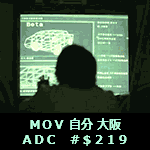|
The Premium also has the read speed pegged at 3100 MB/sec and writes at 1900 MB/sec in a gold box. The Professional has half the read and write speeds of the Premium in green boxes. Also, if you ask to look at the package you'll see the Professional uses an older Phison E8 chip, not the E12 on the Premium- you want that E12!
|
|
|
|

|
| # ? Apr 24, 2024 06:41 |
|
I have to give Inland/Micro Center credit - the Premium drive is not cluttered with an ostentatious "WARRANTY VOID IF REMOVED" sticker - the controller chip is naked to the world with a single sticker over one of the NAND chips. It's a basic drive and I bought one last night to go with my 12.1-flashed BPX Pro boot.
|
|
|
|
BIG HEADLINE posted:I have to give Inland/Micro Center credit - the Premium drive is not cluttered with an ostentatious "WARRANTY VOID IF REMOVED" sticker - the controller chip is naked to the world with a single sticker over one of the NAND chips. It's a basic drive and I bought one last night to go with my 12.1-flashed BPX Pro boot. Now that 1TB Phison e12 drives are down in the $140-150 range, would you recommend them over the ex920 for primary boot drives on gaming machines or mid-range workstations? I/O benchmarks seem to favor e12 drives for large file performance, but the real-world gaming and responsiveness tests seem to slightly favor the ex920. I don't know enough about other features to say whether they'd factor into the decision, except that warranty and endurance seem similar?
|
|
|
|
Stickman posted:Now that 1TB Phison e12 drives are down in the $140-150 range, would you recommend them over the ex920 for primary boot drives on gaming machines or mid-range workstations? Specific benchmarks seem to favor e12 drives for large file performance, but the real-world gaming and responsiveness tests seem to slightly favor the ex920. I don't know enough about other features to say whether they'd factor into the decision, except that warranty and endurance seem similar? The EX920's certainly a good drive, but I'd be hesitant to use them myself because there's always a risk that HP could pitch their "storage" segment (the consumer/enthusiast offerings specifically) overboard with a moment's notice, and then you're stuck with a warrantied drive that might not have concrete warranty support. It sounds like the E12s are getting a pretty decent following (I'm using two of them now), and the standardization of them (the Inland Premium drive uses the exact same packaging type as the BPX Pro save for the colors) across brands is encouraging. I don't know what's keeping Seagate and their Firecuda 510, though. Only thing I can figure is that they made the mistake of announcing too early and now are in the process of flashing their entire run to 12.1, since while MyDigitalSSD and similar companies can get away with "sorry folks, this firmware update's destructive so plan accordingly," Seagate can't, since if little Billy hoses his PC updating his drive, he and all the other little Billys will scream that the drive is dogshit on Newegg and tank its score.
|
|
|
|
The most recent batch of Inland Premiums come with Phison E12s with firmware 12.2, it's supposed to solve some thermal / throttling issues that 12.1 had. Silicon Power's P34A80 and the Sabrent Rocket NVMe SSDs are also Phison E12 based but cost about $145 shipped from Amazon; Sabrent Rocket 1 TBs recently were on sale for $125 shipped with a discount code. Both of these vendors slap needless branding stickers over the whole chip and say "Warranty void if removed" in direct contrast to the Inland Premium which doesn't have anything stuck on their chips except for a label on one of the RAM chips, the controller is left free and clear as BH says.
|
|
|
|
Here's hoping that if you've already got the drive updated to 12.1 the 12.2 F/W will not be destructive.
|
|
|
|
One of the first Inland SSDs I got had firmware 12.1 on it and I had already formatted it as a Mac HFS+ volume. The upgrade was fast and didn't disturb any of the data, but since I'm paranoid after the 12.2 update I did a clean with diskpart and reformatted it yet again.
|
|
|
|
Binary Badger posted:One of the first Inland SSDs I got had firmware 12.1 on it and I had already formatted it as a Mac HFS+ volume. The upgrade was fast and didn't disturb any of the data, but since I'm paranoid after the 12.2 update I did a clean with diskpart and reformatted it yet again. Any chance you could shoot me a link to the 12.2 update tool you used? MyDSSD has been quiet for a long time about their "toolkit" for anything newer than the last-last generation of Phison drives.
|
|
|
|
Check your PMs, MyDigital probably isn't gonna publish the 12.2 updater, surprised the link to the 12.1 updater is still up. Also, all I will say is that the updater I used worked just fine for Inland's, no guarantees about any other vendor, back yer poo poo up, etc.
|
|
|
|
BIG HEADLINE posted:The EX920's certainly a good drive, but I'd be hesitant to use them myself because there's always a risk that HP could pitch their "storage" segment (the consumer/enthusiast offerings specifically) overboard with a moment's notice, and then you're stuck with a warrantied drive that might not have concrete warranty support. It sounds like the E12s are getting a pretty decent following (I'm using two of them now), and the standardization of them (the Inland Premium drive uses the exact same packaging type as the BPX Pro save for the colors) across brands is encouraging. Thanks! The ex920 has been my go-to recommendation for the pc building thread because it's a good performer but nothing else could touch it on price (apart from the 660p, but that's a situational recommendation). It's good to see more high-performance options in that price range.
|
|
|
|
Stickman posted:Thanks! The ex920 has been my go-to recommendation for the pc building thread because it's a good performer but nothing else could touch it on price (apart from the 660p, but that's a situational recommendation). It's good to see more high-performance options in that price range. Yeah - I've got nothing against the drive, it just seems like a department HP might nix at any moment if it becomes unprofitable. As you said, it benchmarks really well in games, but when you're talking about higher-end NVMe drives, it's like an Olympic qualifying match where the difference between 1st, 2nd, and 3rd can be tenths or hundredths of a second.
|
|
|
|
I'm really grumpy because my new build won't recognize my fancy new M2 SSD (Intel 660p) via the windows installer, but if I toss my old hard drive in there and boot off of it, it sees the 660p just fine (and I can partition it, etc). I have a second usb stick with all the chipset drivers on it, the Windows installer shows the sata + m2 drivers in the list of drivers detected, but still complains that it needs a new driver in order to install. So basically, wtf do I have to do to get the Windows installer to slap itself onto that new pci-e M2 drive? This is my first foray into M2 land on a desktop, and my laptops that are using M2 are also using SATA M2 drives.
|
|
|
|
Basically you need to inject NVMe drivers onto your install media. Here's a utility from Gigabyte that works to inject the necessary drivers into Windows 7: https://www.techpowerup.com/forums/threads/gigabyte-windows-7-usb-installation-tool.249384/ Windows 7 came out literally when NVMe M.2 drives didn't exist yet, so you have to roll support into it somehow. Windows 10 -supposedly, and probably dependent on what your OEM version is packaged for- has NVMe drivers rolled in, so dunno if that's the version you're having trouble with. Edit: You may also need to update your mobo BIOS so that it supports booting from PCIe devices, and then alter your boot setup to do so, which may include DISABLING SATA boot, check your local config page for details.. Binary Badger fucked around with this message at 18:28 on Apr 5, 2019 |
|
|
|
Yeah, sorry should have said that. I'm using Win10 v1809 to do the install, and I have the M2 SSD set in the bios as bootable. Motherboard is a Gigabyte Z390 gaming xtreme ultra uber whatever the hell other words they slap on there. I did notice there is a newer bios from a few weeks ago, so I was going to try upgrading it tonight and seeing if that helped. The thing that is weird is that I can see the 660p if I stick a drive that has an already functioning version of Windows 10 on it, but it's not being recognized by the installer. I'll see about injecting drivers into the usb drive I'm doing the install from, maybe that'll do the trick.
|
|
|
|
NVMe drivers should not need drivers with Windows 10 for the installer. Im not sure whats gone wrong.
|
|
|
|
There might be a setting in your bios for CSM, Compatibility Support Module, or legacy OS support, something like that - try toggling that setting.
|
|
|
|
Broken Machine posted:There might be a setting in your bios for CSM, Compatibility Support Module, or legacy OS support, something like that - try toggling that setting. This sounds like the most likely reason. Make sure you're booting your install media in UEFI mode, easiest way to ensure that is to set everything to UEFI boot only (disabling CSM/legacy support).
|
|
|
|
Ended up getting it working last night, I burned a dvd with v1803 instead of v1809 and it worked perfectly. No idea if there is some sort of incompatibility with v1809 and booting an Intel 660p or if it was just a bad image, but v1803 works and everything is grand.
|
|
|
|
binge crotching posted:Ended up getting it working last night, I burned a dvd with v1803 instead of v1809 and it worked perfectly. No idea if there is some sort of incompatibility with v1809 and booting an Intel 660p or if it was just a bad image, but v1803 works and everything is grand. Not too useful now, but 1809 worked fine with my (secondary) 660p using the Aorus Xtreme uber gamer etc It also worked with the latest insider, whichever number that is. The only hardware difference is that I have a the Waterforce version but I doubt that is the kicker  I did set the BIOS from the default "Windows 8/10" mode to "Windows 8/10 WHQL" (both with CSM off) which could also be the reason.
|
|
|
|
Is the Patriot Burst 960GB worth it for 112$ (converted from my local currency)? I only plan to store non-essential things on it like games and other random crap.
|
|
|
|
My terribly ancient 250gb SanDisk SSD is failing. I only use it for my OS and have a couple of other EVO SSDs for general storage. I was thinking about getting a 250gb 960EVO, but is there another contender these days I should take a look at?
|
|
|
|
One of NewEgg's Hell Cocker deals for today is the 1 TB HP EX920 for only $140 shipped. https://slickdeals.net/f/13006963-h...s?src=catpagev2 1 TB of Silicon Media controlled goodness, maybe more power saving than the Phison E12's discussed lately.. but a 1 TB Phison E12 is still only $135 from Micro Center.
|
|
|
|
rath posted:My terribly ancient 250gb SanDisk SSD is failing. I only use it for my OS and have a couple of other EVO SSDs for general storage. I was thinking about getting a 250gb 960EVO, but is there another contender these days I should take a look at? Things have changed a lot in the last year or two with regards to reliability and performance. You can now get a pretty great SSD from a number of brands and prices are great and continuing to drop. Since the price differences between 250GB and 500GB drives are pretty minimal, I'd recommend going with at least a 500GB drive. Does your motherboard have a bootable NVMe slot? If so you should consider a NVMe drive since the price difference isn't that much, especially on smaller drives. If you are stuck with, or want to stick with, SATA then your options are numerous. Samsung EVO's are still great drives, but they're not really that much better than the competition anymore and they tend to be much more expensive. Currently the ADATA SU800 is $50 on Rakuten. Other SATA drives that would make good boot drives are: WD Blue Crucial MX500 Sandisc Ultra 3D (same thing as a WD Blue) Samsung Evo
|
|
|
|
BurritoJustice posted:Not too useful now, but 1809 worked fine with my (secondary) 660p using the Aorus Xtreme uber gamer etc 99% sure it was just a bad boot image on my v1809 install media, since the drive worked just fine as a secondary drive, it was just invisible to the installer. I should have creating a new installer earlier, but it took me way too long to even think about it.
|
|
|
|
BeastOfExmoor posted:Things have changed a lot in the last year or two with regards to reliability and performance. You can now get a pretty great SSD from a number of brands and prices are great and continuing to drop. Since the price differences between 250GB and 500GB drives are pretty minimal, I'd recommend going with at least a 500GB drive. Thanks for the info. I didn't know the quality all around is up so I'll just grab whatever from your list has a good price. NVMe looks cool but my motherboard slightly predates the popularity of it so I'll have to wait til the next build.
|
|
|
|
Crotch Fruit posted:I have a 256GB Crucial MX100 on an ASUS P5QPL-AM and the SSD seems to randomly disappear from the BIOS. Basically, I like to leave the PC running, and every once in a while if I leave it alone for a couple hours, when I come back I see a screen saying no boot device is found as if the PC is trying to boot up and lacks an OS drive. When I see this, I hit either ctrl-alt-del or the reset button and it still says the OS disk is not found, I go into the BIOS and it's not present their either. If I turn the PC off and then back on everything is magically back to normal. This is actually a bug in the Intel SATA Option ROM for the old ICH7/8/9 chipsets, I fought it for years with old motherboards and SSDs. Ages ago I found a good site with a fix, but I can't find the exact one right now. Basically just need to download a newer version of the OpROM for your ICH chipset (probably here), grab a copy of the latest BIOS for your mobo, then use the correct BIOS modding tool to inject the updated OpROM. However, this fix only works on the ICH chipsets that either support proper AHCI or are the RAID variants. From what I can tell, and you've noticed as well, the base ICH7 doesn't seems to support AHCI, so I doubt this BIOS mod workaround will fix it. Just about every other ICH version can probably be fixed with the BIOS mod besides yours. Mine was an ICH9R, and SSD detection was flawless after the fix, whereas before the SSD would only be detected on a cold boot. Even when it was detected, the boot screens showed gibberish for the model of the drive before the fix.
|
|
|
|
I was looking up my total writes for all my SSD's and the results were pretty comical: 4.5 year old Intel 530, used as a boot drive - 43TB written 5 year old Samsung 840 Pros used as workstation boot drives - 26TB written 1.3yr old Samsung 850 Evo used as a boot drive and also containing a huge dropbox - 18TB written Pretty comical to see what my real world stats are and how long it would take to hit a modern SSD's endurance rating at those kind of rates. That said, I hadn't remembered how low (or perhaps more accurately, conservative?) endurance ratings were a few years ago. The Intel drive was only rated for 20GB a day for 5 years (36TB).
|
|
|
|
JBark posted:This is actually a bug in the Intel SATA Option ROM for the old ICH7/8/9 chipsets, I fought it for years with old motherboards and SSDs. Ages ago I found a good site with a fix, but I can't find the exact one right now. Basically just need to download a newer version of the OpROM for your ICH chipset (probably here), grab a copy of the latest BIOS for your mobo, then use the correct BIOS modding tool to inject the updated OpROM. Second, I finally stopped being lazy. Stomach flu is the gift that keeps on giving, I had it, my 4 year old son had it, my wife has it now, I'm just waiting for the day my 3 year old gets it and she is going to be the worst since she is not potty trained. . . But back to the story, I finally used Macrium to save an image of the Crucial MX100, then I copied the MX100 to a PNY SSD so that I would still be able to boot Windows. I used a USB drive with GParted to go and delete all the partitions on the MX100, then formatted it to FAT32. I'm pretty sure this probably didn't TRIM or secure erase the MX100, but it was the easiest option I could think of. I then used the PNY to boot back into windows and load Macrium to restore the MX100 iamge back to the MX100. I assume there might be an easier or better way to do this, but that is what I did. The PC has now been running off of the re-imaged MX100 for 3 days now and I have no noticed the same issue as before. I think the issue is fixed, I will post more if it's not fixed. My one and only complaint about Macrium is it didn't seem to be very user friendly for trying to copy the SSD to a smaller SSD. My MX100 is 256GB, the PNY I copied it to is 240GB. I copied the first 100MB system reserved partition with no problem, then I selected the 237.9GB primary partition and it was a little tricky to find the options to resize the primary partition but I got it resized. I left exactly the same size, 488MB at the tail end for the recovery partition, and Macrium claimed there was not enough space. I resized the Primary even smaller and left 490MB, then 500MB, then 1GB and no matter what I tried Macrium said there was not enough space for the recovery partition. I have no idea what I was doing wrong. BeastOfExmoor posted:I was looking up my total writes for all my SSD's and the results were pretty comical: Not Wolverine fucked around with this message at 20:26 on Apr 12, 2019 |
|
|
|
I also think endurance testing is more reliable allowing to them to increase the rating on the spec sheet more confidently. Purely speculation on my part here, though. Iíve still got an X25-M thatís at 100% drive health. I think it even ran Windows 2003 itís first year and I donít think there was any TRIM support that I was aware of.
|
|
|
|
|
I found this article while poking around for actual endurance ratings on my Intel 530 drive. Makes me feel a lot better about my 43TBW. https://techreport.com/review/27909/the-ssd-endurance-experiment-theyre-all-dead I'd be curious to see someone do this with modern drives, especially the QLC drives that are popping up.
|
|
|
|
cool, my intel 535 just straight up died it was working yesterday and now it doesn't show up in the bios at all (across multiple computers)
|
|
|
|
The first couple generations of SSD were speced very conservatively for endurance, because MLC was new tech and probably to keep the widest distinction for their server SSDs. Intel was and still is more conservative than the average.BeastOfExmoor posted:I found this article while poking around for actual endurance ratings on my Intel 530 drive. Makes me feel a lot better about my 43TBW. That's been commonly cited in this thread as why endurance is not something any average person needs to worry about. They haven't repeated it because it took more than a year of continuous writes to kill those drives, and modern SSDs with much larger capacity would take even longer. Ignore endurance. Even on QLC drives. Unless you know that the stuff you do with your PC writes 100s of GB per day at the minimum, it just isn't relevant.
|
|
|
|
Klyith posted:That's been commonly cited in this thread as why endurance is not something any average person needs to worry about.
|
|
|
|
Even at 1TBW per day you aren't necessarily going to break the bank for endurance warranty these days
|
|
|
|
BeastOfExmoor posted:I was looking up my total writes for all my SSD's and the results were pretty comical: I thought I'd take a look at my boot drive... 6 year 8 month~ year old Samsung 830 256GB, 22042 power on hours (918 days, 2.5 years), 21.5TiB written. I love these drat things; after the 840 came out I bought more 830s instead, they were clearly the better drive. My HTPC has an 830 256GB that was previously the boot drive in my wife's PC, and my dad's machine has an 830 256GB that was previously my documents drive (now there's an 850 Pro 1TB performing that duty). The drives I previously used as boot drives were the Intel 320 120GB (now in a triple RAID0 setup in my Vaio Z along with the built in 64GB SSDs), and the infamous OCZ Vertex2 120GB, which failed, and was replaced, the replacement is in an old Precision laptop. HalloKitty fucked around with this message at 13:47 on Apr 13, 2019 |
|
|
|
BeastOfExmoor posted:I was looking up my total writes for all my SSD's and the results were pretty comical: Crotch Fruit posted:This is fascinating, I knew modern SSDs had better endurance, but like you say only a few years ago endurance ratings were a lot lower. I'm sure my MX100's endurance rating is not very high, but I at least feel confident that at only 1585GB written it's probably got plenty of life left. I'm not sure Crystal Disk Info istill the best program, but it report the drive has 100% life left, is that even reliable on a drive as old as an MX100? VVV I have seen Crystal Disk Info report less than 100%, one drive I have says 99% and another M4 is even lower but I'm not sure where that drive is physically located right now for me to check it. The thing is the older mainstream drives used MLC, which even if it's 2D still has higher endurance than anything with more than 2 bits per cell; nowadays MLC is difficult to find and everything is 3D TLC [or worse]. So, for reference, my Intel 330 is still kicking it at 100% health despite like 16-18 TBW because, although it was difficult to find an endurance rating for this drive, I estimated that at about 3k-5k total P/E cycles (obtained from a similar drive, like a 335,) it can withstand 720 TBW at a minimum (and likely much more than that.) Crotch Fruit posted:My one and only complaint about Macrium is it didn't seem to be very user friendly for trying to copy the SSD to a smaller SSD. My MX100 is 256GB, the PNY I copied it to is 240GB. I copied the first 100MB system reserved partition with no problem, then I selected the 237.9GB primary partition and it was a little tricky to find the options to resize the primary partition but I got it resized. I left exactly the same size, 488MB at the tail end for the recovery partition, and Macrium claimed there was not enough space. I resized the Primary even smaller and left 490MB, then 500MB, then 1GB and no matter what I tried Macrium said there was not enough space for the recovery partition. I have no idea what I was doing wrong. This is the one criticism I have of Reflect. You'd think it should be able to logically downsize the largest, data partition, within the confines of the available free space, when cloning/imaging from a larger to smaller drive, but nope! Gotta deal with that poo poo manually! I've had to do basically what you described: manually copy over the first 2-3 partitions until I get to the data one I have to resize, then calculate how much I have to shrink it manually before dragging over that final partition. It's always worked for me that way. HalloKitty posted:I thought I'd take a look at my boot drive... The power-on hours don't necessarily mean much, especially for SSDs, because there are over 8.7k hours in a year, so leaving a system on 24/7 will quickly rack up those hours even if the system is idle most of the time. My Plex server's been running 24/7 since 2016, so the original drives have well over 20k hours even though they weren't active most of the time (and thus should have plenty of life left in them.) In contrast, that Intel 330 mentioned above is about 6 years old but it's in a gaming desktop that I only use a couple days a week, so it only has about 6k hours on it.
|
|
|
|
I moved the Intel 535 between computers again and tried different power cables and SATA cables with no luck. I take it that I'm completely hosed on this and the drive is dead?
|
|
|
|
Probably. The behavior of some old drives (usually the crucial m4 when it had problems) was that you could leave it plugged in with the PC in the BIOS for like 20 minutes and sometimes it would then be detected and work, but if you've let it sit powered on for a while then boot with it and have no luck the drive is probably dead. It's got a five year warranty though so they should send you a replacement under RMA: https://www.intel.com/content/www/us/en/support/articles/000006069/memory-and-storage/consumer-ssds.html
|
|
|
|
Hang on to those older drives fellas. They should last a long time barring controller failures.
|
|
|
|

|
| # ? Apr 24, 2024 06:41 |
|
BeastOfExmoor posted:
I was going to ask for a gaming SSD for my birthday, but if this is a sensible drive, I may just pull the trigger right now. What would be reasons not to do this?
|
|
|




























